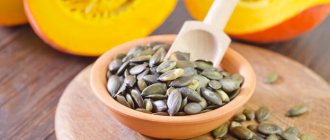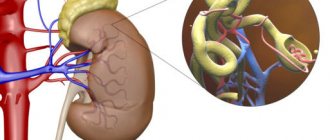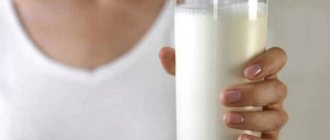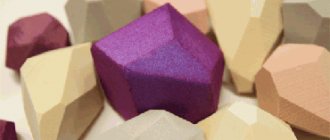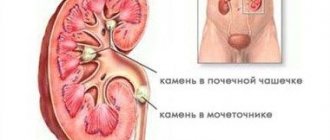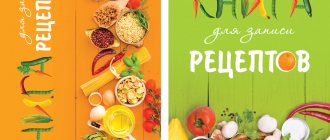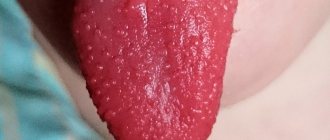Stagnation of bile (cholestasis) is a condition in which the flow of bile into the duodenum is impaired. In this case, pronounced disturbances in the breakdown and absorption of fats develop, which leads to an increase in their concentration in the bloodstream. This entails changes in the transformation of glucose into glycogen, as well as an increase in the amount of cholesterol in the blood. Thus, stagnation of bile, left untreated, can lead to the development of diabetes mellitus, atherosclerosis and their complications. Cholestasis can develop in the bile ducts (intrahepatic stasis) and in the gallbladder (extrahepatic), and can also be acute or chronic.
Every fifth person is at risk
Millions of people carry cholesterol stones in their gallbladders. According to statistics, they occur in 10–30% of adults. But these are average figures; among women the numbers are significantly higher: they have stones 3–8 times more often than men. This is due to female hormones. Both in connection with the presence of them in every woman, and with hormonal contraceptives, there is evidence that they can increase the risk of the formation of cholesterol stones in the gall bladder.
The main difficulty in identifying this problem is not even any pain, but the fact that due to the discovery of stones, surgical operations are performed in which the gallbladder is removed. But this is a serious operation. Until recently, it was performed openly, through a large incision, and there were many complications and even deaths. Today it is usually done laparoscopically - through a “straw”, but it is still not an easy procedure. In reality, the operation is not indicated for everyone. But at the same time, of course, the presence of such stones is not at all beneficial for health.
Part 1. The most important things about choleretics
According to the classification, choleretics are divided into two groups: those that increase the secretion of bile and the formation of bile acids, as well as those that increase the secretion of bile due to the water component.
The first group is drugs that contain bile acids. Such choleretics, in addition to lyophilized animal bile, include extracts of liver tissue, pancreatic tissue and mucous membranes of the small intestine of cattle, activated carbon and extracts of medicinal plants.
Note: choleretics with synthetic bile acids increase the volume of bile produced, and preparations containing animal bile both stimulate bile formation and directly perform a replacement function [3].
Synthetic drugs, in addition to choleretic, also have antispasmodic, hypolipidemic, antibacterial, anti-inflammatory effects, and also suppress the processes of putrefaction and fermentation in the intestines.
Choleretics of plant origin, which include corn silk, tansy, birch buds, Far Eastern lily of the valley herb, turmeric root, oregano herb, immortelle flowers, etc., increase the functional capacity of the liver, reduce the viscosity of bile, increase the secretion of bile, increase the content in bile cholates
Along with increasing bile secretion, most plant choleretics increase the tone of the gallbladder and at the same time relax the smooth muscles of the biliary tract and sphincters of Oddi and Lutkens. This facilitates the flow of bile.
Herbal medicines that have a choleretic effect also have a significant effect on other functions of the body - they normalize and stimulate the secretion of the glands of the stomach and pancreas, increase the enzymatic activity of gastric juice, and enhance intestinal motility during atony.
The second group is drugs that increase the secretion of bile due to the water component (mineral waters).
Mineral waters make bile less viscous. Mineral salts help increase the colloidal stability of bile; and this, in turn, indicates the preservation of cholesterol in a dissolved state and prevents the development of cholelithiasis [4].
Indications for the use of choleretics
: chronic cholecystitis and cholangitis, treatment of biliary dyskinesia and constipation. If necessary, choleretics are combined with antibiotics, analgesics and antispasmodics, as well as laxatives [5]. The mayor must remember that choleretics are contraindicated in acute forms of cholecystitis, pancreatitis, cholangitis, hepatitis, gastric and duodenal ulcers. Taking them against the background of the listed diseases can provoke a deterioration in health and the need for surgical intervention.
Tangle of diseases
And as numerous studies show, proper nutrition can help with this. The role of heredity in the development of this disease is 25%. And, therefore, nutrition and lifestyle can play a big role in its prevention. In addition, such a diet will help protect against many other diseases. After all, such gallstones are tied into one “tangle” with other metabolic diseases - metabolic syndrome, obesity, diabetes, dyslipidemia (increased cholesterol and blood lipids).
Treatment
Treatment tactics are formed based on the examination results, but always involve eliminating the cause of this condition. If bile stagnation is caused by obstruction of the gallbladder or bile ducts, surgical intervention is indicated to restore the patency of the ducts. In other cases, treatment is carried out using a complex of drugs with choleretic, choleretic, hepatoprotective or other effects. The course of treatment is formed individually for each patient.
What and how to eat to avoid stones?
Promotes the formation of stones. Fast food, meat (especially fatty meat), sugar and other easily digestible carbohydrates (sweets, flour, soda), low fiber intake, very low-calorie diets (up to 1500 kcal per day), high fructose intake (diabetic foods, honey, fructose soda), beans and other legumes, vitamin C deficiency, overeating (excess calorie intake), prolonged fasting.
Protects against the formation of stones. Monounsaturated and polyunsaturated fats (vegetable oils), nuts, fiber (vegetables, fruits and whole grains), calcium (dairy products), moderate alcohol consumption containing no more than 20-40 g of pure alcohol per day, coffee and caffeine, vitamin C and foods rich in it, a regular diet, a vegetarian diet, fish and fish oil, with low-calorie diets it is important to consume enough fat (7-10 g per day).
Top 15 foods to improve bile flow
Chicken
Steamed, baked or boiled fillets contain lean protein. Dietary protein is valuable because it stimulates the secretion of the hormone cholecystokinin (CCK). It causes contraction of the gallbladder and secretion of pancreatic enzymes.
Radish
Contains sulfur, which helps remove deposits from the gallbladder, and vitamin C to prevent further formation. The composition also contains the enzyme cholesterol-7-alpha-hydroxylase, which reduces cholesterol and triglyceride levels. Despite the benefits, radishes are not recommended for everyone and you should consult your doctor before consuming them. [6]
Broccoli
Cabbage is rich in fiber and calcium, which are essential for gastrointestinal health. Dietary fiber improves peristalsis, microflora, and reduces bile production, which is important when it stagnates. [7]
Coffee
Studies have found that caffeine suppresses the crystallization of cholesterol and increases the outflow of fluid from the gallbladder. However, decaffeinated coffee does not have such effects. [8]
Turmeric
The bright orange spice reduces symptoms of bloating and gas due to indigestion, and has choleretic properties (especially when combined with black pepper). Turmeric, although it improves lipid metabolism, is not recommended for gallstone disease. [9]
Sweet red and green peppers
Bell peppers are the best source of vitamin C among vegetables. It also replenishes B vitamins, magnesium, folic acid and phytonutrients to protect the gastrointestinal tract from many diseases. [10]
Milk thistle
The herb is involved in the formation of enzymes, increases bile production, soothes mucous membranes and reduces inflammation. However, milk thistle is not recommended for Gilbert's syndrome - it accelerates the first phase of detoxification, thereby increasing the level of bilirubin in the blood.
Oranges
The pulp is rich in vitamin C, due to the lack of which gallstone disease develops. This is confirmed by doctors and a year-long study involving 2,129 people. Since taking vitamin C supplements increases the risk of kidney stones, it's best to get the vitamin from natural foods such as oranges and other citrus fruits. [eleven]
Tomatoes
Tomato fruits stimulate bile flow and remove toxins through the digestive tract, and also reduce inflammation. Tomato juice without sweeteners has the same properties.
Salo
The product contains 40% unsaturated fatty acids and is rich in fat-soluble vitamins A, D, E. Therefore, lard binds and removes toxins, and has choleretic properties.
Low-fat dairy products
Low-fat milk, cheese, kefir, yogurt, and yogurt do not burden the gastrointestinal tract, do not delay gastric emptying, and do not cause bloating. Additionally, fermented milk products contain the necessary pre- and probiotics.
Legumes
Beans, soybeans, and lentils are rich in vegetable protein. For problems with gallstones, it is healthier than animals, which is confirmed by research. [12]
Flax-seed
Flaxseed oil reduces pain and has an anti-inflammatory effect. But it cannot be taken for acute pancreatitis (only during remission), since the additional secretion of bile provokes spasms.
Nuts.
Some studies have shown that almonds and walnuts prevent the formation of gallstones. Due to their high fat content, it is important to eat them in small quantities.
Tofu
100 g of vegetarian cheese contains 345 mg of calcium, 8-13 g of protein and only 5-10 g of fat. The dietary product will help avoid attacks of pain in the right hypochondrium, diversify the menu and prevent blockage of the bile ducts.
Other ways to normalize bile flow
The worst enemy of the gallbladder is low-calorie diets and losing weight by 1–1.5 kg per week. They increase the risk of stone formation and other diseases, since when food consumption is reduced, the need for bile decreases - the secretion becomes thick and concentrated. To help your body, you need to follow other rules:
- eat fractionally by the hour - 5-6 times a day at the same time;
- there is a lot of thermally processed and raw fiber; [13]
- avoid fatty foods and consume 20–40 g of fat per day;
- exclude from the diet everything fried, crusty foods and refined carbohydrates - added sugars, sweeteners, white flour, instant cereals, baked goods, desserts;
- give up alcohol;
- do not consume ice cream, cold foods and drinks - the cold blocks the functioning of the organ;
- exclude canned vegetables and fruits from the menu;
- drink 2–2.5 liters of clean water between meals;
- do not get carried away with ginger, as it stimulates the liver to secrete more bile juice, but does not accelerate its release; [14]
- maintain a moderate level of activity - tiring exercise forces the liver to produce bile more actively, but does not improve its outflow. [15]
Expert commentary
Tatyana Eliseeva, nutritionist, nutritionist
Research confirms that bitter foods and bitter herbs—dark green leafy vegetables, beets, artichokes, dandelion root tea, celery juice—help relieve bile flow problems. Discoveries on this matter continue. So in 2021, it was documented that bile acids are produced by microbes in the intestines. This once again confirms that it is necessary to take care of the gastrointestinal tract as a whole, and not about individual organs.
Material publication date – October 20, 2021
Information sources
- Physiology, Bile Secretion, https://www.ncbi.nlm.nih.gov/books/NBK470209/
- Epidemiology of Gallbladder Disease: Cholelithiasis and Cancer, https://www.ncbi.nlm.nih.gov/pmc/articles/PMC3343155/
- Biliary Obstruction, https://www.ncbi.nlm.nih.gov/books/NBK539698/
- Dietary Patterns and Risk of Gallbladder Disease: A Hospital-based Case-Control Study in Adult Women, https://www.ncbi.nlm.nih.gov/pmc/articles/PMC4438647/
- Bile Formation and Secretion, https://www.ncbi.nlm.nih.gov/pmc/articles/PMC4091928/
- Deciphering the Nutraceutical Potential of Raphanus sativus—A Comprehensive Overview, https://www.ncbi.nlm.nih.gov/pmc/articles/PMC6412475/
- Side Streams of Broccoli Leaves: A Climate Smart and Healthy Food Ingredient, https://www.ncbi.nlm.nih.gov/pmc/articles/PMC7178181/
- Coffee Consumption and Risk of Biliary Tract Cancers and Liver Cancer: A Dose–Response Meta-Analysis of Prospective Cohort Studies, https://www.ncbi.nlm.nih.gov/pmc/articles/PMC5622710/
- Effect of black pepper and piperine on bile secretion and composition in rats, https://pubmed.ncbi.nlm.nih.gov/3431580/
- Serum ascorbic acid and other correlates of gallbladder disease among US adults, https://www.ncbi.nlm.nih.gov/pmc/articles/PMC1508320/
- The effect of vitamin C in high doses on plasma and biliary lipid composition in patients with cholesterol gallstones: prolongation of the nucleation time, https://pubmed.ncbi.nlm.nih.gov/9179545/
- Effect of dietary animal and vegetable protein on gallstone formation and biliary constituents in the hamster, https://pubmed.ncbi.nlm.nih.gov/6708746/
- Fruits and vegetables consumption and the risk of gallstone diasease, https://www.ncbi.nlm.nih.gov/pmc/articles/PMC6641782/
- The Effects of Ginger on Gallbladder Motility in Healthy Male Humans, https://www.ncbi.nlm.nih.gov/pmc/articles/PMC3228982/
- Physical Activity Modulating Lipid Metabolism in Gallbladder Diseases, https://www.ncbi.nlm.nih.gov/pmc/articles/PMC8114792/
Attention! The information is for informational purposes only and is not intended to make a diagnosis or prescribe treatment. Always consult a specialized doctor!
Authors: Anna Shelestun, Tatyana Eliseeva Ask a question
Rating:
9.2
/10
Votes: 7
Usefulness of material 7.7
Reliability of information 10
Formatting of Article 10
What depends on lifestyle and what on other organs?
The basic mechanism of bile thickening is a change in the ratio of bile acids and cholesterol. Normally, in liver bile, cholesterol molecules are completely “surrounded” by bile acid molecules, which makes them soluble in water. This prevents agglomeration. If there is too much cholesterol, or hepatocytes “do not have time” to synthesize bile acids, a precipitate occurs. This scenario occurs in the following cases:
- Dietary defects with a predominance of fatty foods and a small amount of plant fibers, which naturally regulate the absorption of cholesterol in the intestines.
- Fluid deficiency in the body (insufficient intake or large loss due to various diseases).
- Intestinal dysbiosis, enhancing cholesterol absorption.
These reasons depend only on the person’s lifestyle. Even a violation of the intestinal microflora most often occurs due to poor nutrition or uncontrolled use of antibiotics.
Cholestasis
With this pathological syndrome, manifestations and pathological changes are caused by an excess amount of bile in hepatocytes and tubules. The severity of symptoms depends on the cause that caused cholestasis, the severity of toxic damage to liver cells and tubules caused by impaired bile transport.
Any form of cholestasis is characterized by a number of general symptoms: an increase in the size of the liver, pain and discomfort in the area of the right hypochondrium, itching, acholic (discolored) feces, dark urine, disturbances in the digestive processes. A characteristic feature of itching is its intensification in the evening and after contact with warm water. This symptom affects the psychological comfort of patients, causing irritability and insomnia. As the severity of the pathological process and the level of obstruction increase, the stool loses color until it becomes completely discolored. At the same time, the stool becomes more frequent, becoming liquid and foul-smelling.
Due to a deficiency in the intestines of bile acids, which are used for the absorption of fat-soluble vitamins (A, E, K, D), the level of fatty acids and neutral fat in the feces increases. Due to impaired absorption of vitamin K during a protracted course of the disease, blood clotting time increases in patients, which is manifested by increased bleeding. A lack of vitamin D provokes a decrease in bone density, as a result of which patients suffer from pain in the limbs, spine, and spontaneous fractures. With prolonged insufficient absorption of vitamin A, visual acuity decreases and hemeralopia occurs, manifested by deterioration of eye adaptation in the dark.
In the chronic course of the process, a disturbance in the metabolism of copper occurs, which accumulates in the bile. This can provoke the formation of fibrous tissue in organs, including the liver. Due to an increase in lipid levels, the formation of xanthomas and xanthelasmas begins, caused by the deposition of cholesterol under the skin. Xanthomas have a characteristic location on the skin of the eyelids, under the mammary glands, in the neck and back, and on the palmar surface of the hands. These formations occur with a persistent increase in cholesterol levels for three or more months; when its level normalizes, they may disappear on their own.
In some cases, the symptoms are mild, which complicates the diagnosis of cholestasis syndrome and contributes to the long course of the pathological condition - from several months to several years. A certain proportion of patients turn to a dermatologist for treatment of itchy skin, ignoring other symptoms.
How to get rid of bile stagnation
First of all, you need to change your diet to improve your health.
Dietary rules for gallbladder diseases:
- limit the consumption of fried foods;
- do not eat spicy food;
- exclude carbonated drinks;
- do not eat fatty foods;
- It is recommended to eat the dishes warm;
- choose dairy and fermented milk products with a low fat content;
- It is preferable to add cold-pressed vegetable oils to dishes;
- Alcoholic drinks are not allowed;
- follow the correct diet, eat at least 4-5 hours a day;
- do not overeat;
- When preparing, use gentle methods: boiling, baking in the oven, steaming;
- limit the consumption of strong tea, coffee, cocoa;
- add a variety of porridges to the daily menu, for example, oatmeal, rice, semolina;
- drink more compotes, herbal teas, decoctions.
We recommend watching a video about treating bile stagnation:
https://www.youtube.com/watch?v=uIwh7bCip9w
In addition, there are a number of products that have choleretic properties:
- celery;
- spinach;
- beet;
- tomatoes;
- fruits, berries, vegetables with a lot of pectin;
- citrus.
Traditional medicine has been using recipes for centuries that relieve bile stagnation.
Choleretic drugs:
- dandelion;
- immortelle;
- birch leaf;
- strawberries;
- corn silk;
- sagebrush;
- calamus root.
As a rule, the course of herbal treatment is 2 weeks.
Forms of cholestasis
Depending on the place of development and localization of the pathology, cholestatic syndrome can be: intravesical, intrahepatic.
The first type is characterized by bile stagnation, when the extrahepatic bile ducts are blocked, and for the second type, deposits will be in the intrahepatic bile ducts and hepatocytes.
According to the manifestations of jaundice in cholestasis syndrome, there are: anicteric and icteric.
When the color of the skin changes towards yellow, the icteric form of cholestasis is identified. Anicteric cholestasis is considered a prestage of the icteric form. Sometimes the anicteric stage lasts for months; this form of the disease is difficult to treat.
Based on the criteria associated with clinical symptoms, cholestasis occurs:
- acute , when symptoms appear sharply and clearly expressed;
- chronic , when symptoms increase over several months, are not always noticeable and to a weak degree.
Chronic cholestasis can be complicated by the formation of pigmented stones in the biliary tract, accompanied by cholangitis.
If you monitor the destruction of cells, you can distinguish cholestasis with cytolysis and without cytolysis. Cytolysis is considered a violation of the integrity of liver cells. It can occur when exposed to hepatotropic viruses, drugs, and toxic substances.
According to the mechanism of occurrence of the syndrome, cholestasis is distinguished:
- negative , when the amount of excreted bile decreases;
- dissociative , with a delay in the release of certain components;
- total , if the mechanism of passage of bile through the duodenum is disrupted.
Causes of pathology
The disease can develop for various reasons. The intrahepatic form of cholestasis is manifested by a smaller flow of bile into the duodenum. This may occur due to hepatocellular pathology. If the tubules are damaged due to damage to the intrahepatic interlobular duct, then the syndrome is called canalicular, as well as extralobular ductular cholestasis, and if hepatocytes are destroyed, then hepatocellular.
Viruses, medications, alcohol, and toxic effects make it difficult for the liver to function normally. Canalicular cholestasis with hepatocellular cholestasis can be caused by any form of liver damage, as well as impaired metabolism and heart problems. The etiology of introlobular cholestasis is in the malfunction of the vacation, basolateral membranes. If the epithelium of the bile duct is damaged, patency is complicated, the composition of bile and acid metabolism are disrupted, then ductular cholestasis develops.
Intrahepatic cholestasis may appear due to factors such as ductopenia, hypoplasia of the extrahepatic and intrahepatic ducts, Alagille syndrome, infection, viruses, exposure to the drug Thiabendazole, cystic fibrosis, sarcoidosis, istiocytosis X, reactions associated with transplant rejection, cholangiocarcinoma, hepatitis, autoimmune deficiency A1- antitrypsin, cholangitis, amyloidosis, congestive liver, circulatory disorders, hepatic vein thrombosis.
Extrahepatic cholestasis begins to manifest itself when the positive effect of the main intrahepatic and extrahepatic ducts is counteracted. One of the common causes is the presence of stones in the bile ducts.
The progression of the extrahepatic form of the syndrome may be due to the presence of stones, malignant neoplasms in the ducts, damage to the duodenum, hepatic artery aneurysm, pancreatitis, malfunction of the pancreas, the appearance of cysts, hemobilia, abscess, parasitic and other infections.
Intravesical cholestasis (mild chronic) can occur in the chronic form of non-calculous cholecystitis, when the activity of the gallbladder decreases - an unbalanced composition of bile is formed.
Diagnosis of intravesical and intrahepatic cholestasis
The media and the Internet should not become sources of treatment for the disease. Only special diagnostic methods reveal pathology, and competent specialists prescribe the necessary treatment.
The patient is physically (externally) examined by a doctor. At this stage, abrasions, rashes, redness, scratching, and icteric skin color may be detected.
Biochemical laboratory experiments and analysis of the concentration of serum bile acids will help diagnose the disease with greater accuracy. If the syndrome is detected, blood biochemistry will show elevated cholesterol, bilirubin, phospholipids, acids, and enzymes.
Patients continue to be evaluated to identify extrahepatic “surgical” cholestasis. It may appear at first glance to be intrahepatic in symptoms.
The next step in diagnosis will be an ultrasound of the abdominal cavity, where an enlarged gallbladder is observed and manifestations of blockage of the bile ducts are identified.
If an increase in the volume of the ducts is detected, cholangiography is prescribed, otherwise the diagnosis is indicated by the clinical picture. For example, if the presence of stones is suspected, then ERCP is performed. When this study does not detect stones, they may be referred for a liver biopsy, but before that the doctor determines the absence of an extrahepatic type.
Part 2. The most important things about cholekinetics
Cholekinetics are also divided into two groups:
- Actually, cholekinetics, which include:
- magnesium sulfate;
- polyhydric alcohols (sorbitol, mannitol, xylitol);
- sunflower, olive oils, essential oils;
- herbs and plants containing bitterness;
- juices of lingonberries, cranberries, etc.
- Cholespasmolytics:
- hyoscine butyl bromide;
- papaverine;
- drotaverine
Indications for the use of cholekinetics:
- atony of the gallbladder with stagnation of bile;
- gallbladder dyskinesia;
- chronic cholecystitis;
- chronic hepatitis;
- anacid and strong hypoacid gastritis;
- carrying out duodenal sounding.
Cholespasmolytics are prescribed for the hyperkinetic form of biliary dyskinesia and for cholelithiasis. They are used to relieve pain of moderate intensity, often accompanying pathology of the biliary tract [6, 7].
Such drugs are contraindicated
in acute liver diseases, with exacerbation of hyperacid gastritis and peptic ulcer of the stomach and duodenum. In this case, taking cholespasmolytics will only worsen the situation.
Three natural remedies that are most likely to improve its structure
The first thing that usually comes to mind is to take choleretic herbs or medications or make a tube. This is the wrong idea!
Because tubing is a one-time event. It's the same as going to the toilet with an enema.
Even natural choleretics affect quantity, not quality. If you drink them constantly, then you simply strain your liver.
There are other, more natural ways:
- Help bile to be released on time. Eat at least three times a day, do not forget to have breakfast, thereby avoiding long breaks when it should accumulate in the bladder. Because the “liver” produces it for 24 hours, but the gallbladder stores it. But during the day, food must additionally contain certain substances that help protect against biliary dyskinesia. These are plant fibers. For example, porridge for breakfast, vegetables for lunch, vegetables for dinner (read about Redi Fiber if you don’t have time to cook vegetables every night).
But there is also a special product - active psyllium fiber , which you can get as part of the NutriDetox “green smoothie”. Thus, you will easily receive vitamins and microelements of natural origin and fiber and protect yourself from biliary dyskinesia. You should definitely read more about NutriDetox. Because it is very convenient for use in the health promotion system.
Help the liver release more bile acids and lower density cholesterol. Read about Ziflan. Export formula based on immortelle extract. It has such a profound effect on the structure of bile that it is used as part of our programs for the correction of cholesterol and stones.
At the same time, influence the causes of increased absorption of high-density cholesterol in the intestines. To do this, you need to again increase the amount of plant fiber and be sure to “reboot” the intestinal microflora, making it friendly. Today it is a well-established fact that disturbed microflora significantly affects not only digestion, but also the risk of stone formation, the state of the immune system, skin, mood, concentration of memory and attention, the rate of atherosclerosis, weight gain, and the risk of developing age-related diseases. The mechanism of this effect in most cases is an increased load on the liver when the balance of beneficial and unhealthy bacteria in the intestines is disturbed.
The Sokolinsky System uses Unibacter to reboot the microflora. Special Series (which is produced specifically only for the Sokolinsky Center).
How to combine all this into a system? Very simple!
The body will not immediately begin to work differently. Therefore, it takes time to support the liver and bile ducts. You can apply this scheme for three months.
In the first month, to improve the structure and normalize digestion in general, you can use 1/3 teaspoon of NutriDetox spoon of powder in a glass of water or vegetable juice, stir, drink immediately + Ziflan. Export formula 1 cap. 2 times a day before meals + add Unibacter to it . A special series of 2 capsules in the evening.
In the second month, continue taking NutriDetox and Unibacter. Special series
Next, regularly add plant fiber to food in the form of Redi Fiber, 1 tablespoon in juice or fermented milk drink a couple of times a day.
If the severity of the problem is high, you can use Complex-Active for gallstones for 4 months
If there are enough various health problems, then start with the most universal basic Complex for deep cleansing and nutrition with NutriDetox + normalization of microflora . About him - below!
What pathologies occur when there are disturbances in the process of bile formation?
A sedentary lifestyle and poor diet cause health problems.
The following reasons can disrupt the process of bile formation:
- diseases of the digestive system;
- sedentary lifestyle;
- stress conditions, nervous disorders;
- eating large amounts of fatty foods;
- abuse of flour products;
- insufficient amount of fiber in daily diet;
- passion for fast food;
- liver pathologies;
- improper diet: 1-2 meals a day;
- a hearty dinner before bed.
In the presence of these reasons, there is a threat of diseases associated with the formation of bile.
Proper diet
Together with drug treatment for a patient with bile stagnation, the doctor creates a proper nutrition menu. Patients exclude spicy, fried, various types of baked goods, canned goods, spices, rich meat broths, and any fatty foods from their diet. The diet is formed from dishes containing vegetables and fruits.
The patient's morning should begin with drinking medicinal mineral water; it is also recommended to consume fermented milk products daily. Eating before bed is prohibited, and during the day you need to eat in modest portions, but often (from five to seven times a day). Without strict adherence to dietary recommendations, cholestasis cannot be cured.
More than half of all food consumed must be heat-treated and served warm. You can eat oat and buckwheat porridge. Please note that you need to cook by steaming, in a slow cooker and in the oven. It is recommended to exclude cold drinks or warm them to room temperature before drinking; to do this, you can leave the drink in a warm room for a while.
What you can and cannot eat if you have bile stagnation
The diet includes rye bread, savory products, honey, and jam. Dairy products include sour cream, cheeses, and curd products (low-fat). Juices and drinks made only from sweet berries and fruits. You can also drink compotes and weak tea. You should eat a lot of greens, vegetables, fruits, and berries. Soups should be vegetable with cereals, pasta, or lean meat: rabbit, veal, chicken, turkey. It is recommended to limit vegetable fats in the diet to 50 g per day.
When dieting, it is prohibited to consume lard, animal fats, soup made from fatty meats and fish. Not all greens are allowed; green onions, sorrel leaves, and spinach should be avoided. You can't have radishes, radishes. As for drinks, alcohol, strong coffee, and any cold drinks are prohibited. Nutritionists also do not recommend canned foods (pickled vegetables, caviar, smoked foods) for consumption. Exclude from the menu confectionery pastries, chocolate, ice cream, spices, mustard, horseradish, sour varieties of fruits and berries.
For treatment, it is very useful to drink skim milk - it is a good source of calcium. When a sign of cholestasis occurs in the form of itching, you need to see a doctor for a liver examination; this symptom may appear much earlier than others; it should not be ignored, because delays often lead to liver failure. Treatment started in a timely manner can relieve symptoms and improve liver function.
